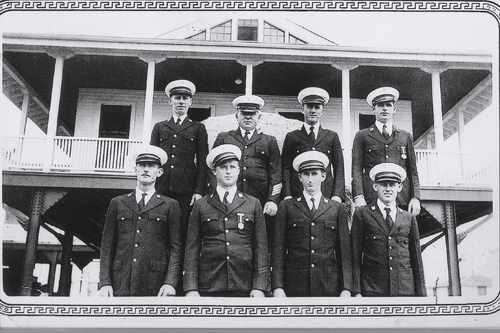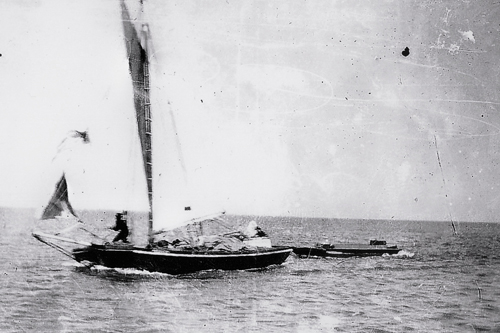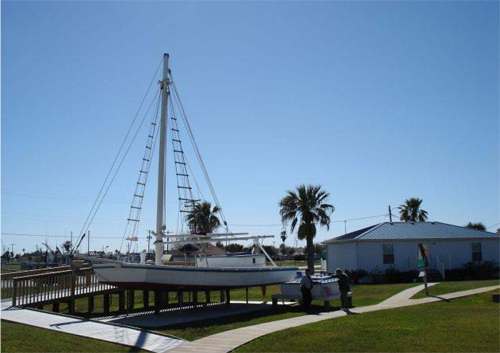
In front of old Coast Guard Station in Freeport: Top Row – Henry Pessarra, George Peterson, Sam Gray, AZ Walker Bottom Row – William F Day, Alan Fox, Buck Hawes, Gilbert Wallington
The above photo, which includes men from Port O’Connor, was chosen to become part of a military memorial to be dedicated later this month at the Angleton courthouse. It was submitted to the memorial committee by Ricky Day and will represent the Coast Guard branch of the military.
Taken around 1930, the photo was given to Ricky by his aunt, Ruth Day Coufal. Pictured in the front row, at left, is William F. Day, Ricky Day’s grandfather and brother of Ruth Day Coufal. Mrs. Coufal and Miss Lucille Whittaker identified the men in the photo. Ruth Day and Lucille Whittaker were childhood friends, both being born in Port O’Connor. Ruth Day Coufal and Lucille Whittaker both passed away in 2012.
William F. “Bill” Day served two tours in the Coast Guard. He enlisted in the last year of WWI and served from Feb. 5, 1918 to April 30, 1921 and then a second tour from Aug. 1, 1926 to Sept. 1, 1939. He was serving at Station Saluria until the it was destroyed in the 1929 storm; he then moved to Freeport.
Bill Day was a commercial fisherman in Port O’Connor and found the reef that bears his name. He had kept it a secret for a long time and was taking some exceptional oysters off of it at the time. The other fishermen tried to catch him on that reef for a long time, but he would keep a good watch out for others and move off of it if he saw someone coming. He owned a Texas Scow Sloop like in the picture below.

The boat in the picture belonged to Raymond Whittaker. Lucille Whittaker gave Ricky a copy of this several years ago. This was the first time he had seen a picture of the type of boat his grandfather, Bill Day, owned.
Rockport Museum: The La Tortuga also rests outside. This Port Isabel butthead sloop the only Texas Scow Sloop still in existence. It was constructed in 1990 on the Museum grounds by volunteers using only hand tools, under the supervision of boatbuilder Miguel Garza, Sr. with nothing but plans inside his head. These boats once numbered in the hundreds along the south Texas coast. The boats fished the shallow bays in pairs with a 4-5,000 foot gill net strung between them (Gill nets for commercial fishing were outlawed in 1952.) The sloop has a draft of 12 inches and a tremendous sail area – the 28 foot scow carried 550 square feet of canvas, enabling it to tow the boat’s long string of nets. Catches would many times be in the thousands of pounds per netting. The sloops were fast sailers and could glide through just inches of water.

